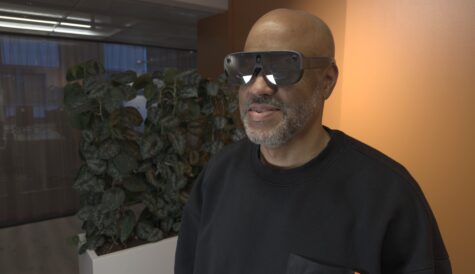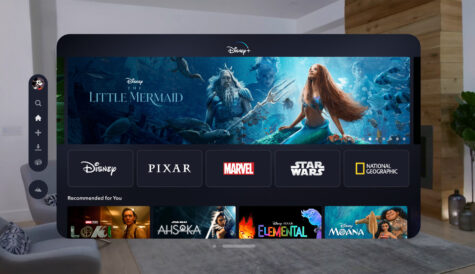
After more than 40 years of operation, DTVE is closing its doors and our website will no longer be updated daily. Thank you for all of your support.
Taking fan experiences to the next level with technology
Brian Morris, VP and general manager, media and entertainment services, Tata Communications, looks at how the entertainment industry can embrace virtual reality.
 There is a constant drive to find new ways of enhancing the viewing experience for fans across sports and entertainment. Recently, virtual reality (VR) has emerged as a technology with the potential to enable viewers to immerse themselves in the action like never before. How can the media industry embrace new digital applications to take the fan experience to the next level?
There is a constant drive to find new ways of enhancing the viewing experience for fans across sports and entertainment. Recently, virtual reality (VR) has emerged as a technology with the potential to enable viewers to immerse themselves in the action like never before. How can the media industry embrace new digital applications to take the fan experience to the next level?
The ability of VR to live up to the hype will depend on the industry’s ability to harness it and give people experiences that money can’t buy. Otherwise, these applications will risk withering away in the same way that 3D TV did. Yet, there is a common misconception that you have to build end-to-end VR experiences to make people embrace this technology, which perhaps stifles the pace of innovation we see in this space. In fact, the biggest opportunity lies in amplifying entertainment experiences, such as the Star Trek or James Bond film series, or live sports or music events, making them more compelling with additional immersive elements.
Bringing fans closer to the action
Today, events are being watched live on multiple devices, from TVs to tablets and smartphones, at home and on the go. In order to truly embrace popular sports or entertainment events, fans must feel like they’re actually part of what’s unfolding. And, being digitally connected to the stadium is one major step in becoming fully immersed in the magic on the stage or pitch.
Creating these experiences, at homes and in stadiums, requires an increased focus on connectivity and AI platforms that have the ability to store and process vast quantities of data. These systems provide real-time analytics, offering fans insights and access to more information than ever before. New cloud deployments support these applications and services enabling these large scale and real-time connections to work.
Enhanced experiences at home and the arena
Broadcasters and media companies are also tapping into new platforms to deliver these enhanced experiences. In motorsports, Formula One Management, for example, can control some of its robotic trackside cameras remotely from its technical headquarters and share the feeds with TV broadcasters globally – thanks to superfast reliable connectivity. And, powered by global fibre networks, F1 broadcaster Sky will televise all F1 races in Ultra High Definition (UHD) this season. As fans want to consume events on multiple platforms at once, the technical capability is also ready to allow F1 broadcasters to deliver live OTT content globally, in complete sync across smartphones, tablets and TVs, so that live Grand Prix can be made a truly real-time, social TV experience.
Efforts to create a phenomenal fan experience aren’t exclusively targeted to those at home. For example, Wembley Stadium in the UK, which opened its doors in 2007, underwent a major renovation to deploy technologies inside the arena that build on the overall experience for the viewer. During last year’s FA Cup final, select groups in the boxes within the stadium were able to access and review multi-angle plays on tablets immediately after watching them take place on the field.
Engaging with fans in new ways
To give F1 fans a new way to engage with the reigning world champions Mercedes AMG Petronas in real time, the Silver Arrows team introduced a social wall in its garage. This huge wall allows fans’ tweets to be seen by the team and drivers, and for the team to respond to fans’ messages there and then. Taking fan engagement even further, as part of the F1 Connectivity Innovation Prize in 2016, Formula One Management, Mercedes and Tata Communications invited fans to submit ideas for how VR and AR could be used by both fans at home and at the track. The concept of the winning idea is a ‘roaming commentators’ app that overcomes the limitations of a traditional television broadcast. It uses VR to deliver a 360-degree visual experience of the F1 trackside to the fans at home. Fans can use their mobile phones, laptops or VR gadgets to enjoy the experience.
Highly immersive experiences, enabled by not just VR but also UHD, AI, connected stadiums and social applications, are becoming mainstream at sports and entertainment venues and homes around the world. The underlying technology foundations – superfast connectivity over fibre and unlimited storage capacity in the cloud – now exist to make them possible on a global scale. With new innovations in the horizon, more and more sports, entertainment and media organisations will be turning to fibre networks and the cloud to be able to create more memorable fan experiences than ever before.


